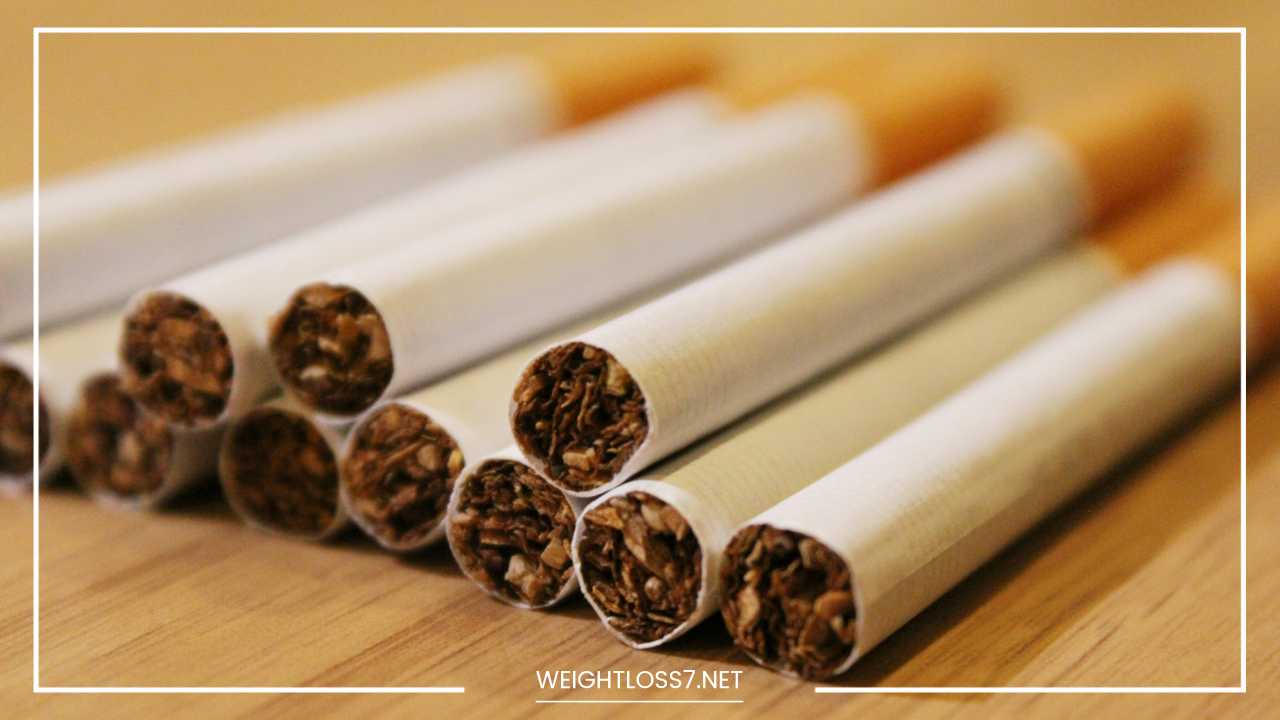Turn Your Tobacco Into Something Healthier

Tobacco Repurposing
Turning the Page: Repurposing Tobacco for a Healthier Future
The acrid aroma of a cigarette, the tell-tale yellow stain on fingers – these are potent symbols of a global health crisis. Tobacco use remains a leading cause of preventable death worldwide, claiming millions of lives each year.
From lung cancer and heart disease to stroke and various cancers, the health risks associated with smoking are undeniable.
But what if there was a way to rewrite this narrative? What if the very plant responsible for such devastation could be repurposed for a healthier future?
This concept might seem radical, but ongoing research is exploring the potential to utilize tobacco plants for purposes beyond smoking.
This post delves into the current state of tobacco use, the far-reaching consequences of this habit, and exciting possibilities for repurposing this crop for a more positive impact on society.
The Dark Side of Tobacco: A Global Health Threat
Tobacco use is a global health threat of staggering proportions. According to the World Health Organization (WHO), tobacco use is the leading cause of preventable death, killing over 8 million people annually.
Of these deaths, more than 7 million are a direct result of tobacco use, while around 1.2 million are the result of secondhand smoke exposure [WHO Tobacco Factsheet].
The culprit lies in the plethora of harmful chemicals found in tobacco products. Tar, carbon monoxide, and nicotine are just a few of the over 7,000 chemicals present in tobacco smoke.
These chemicals damage the lungs, leading to chronic obstructive pulmonary disease (COPD), a debilitating respiratory condition. They also contribute to the formation of plaque in arteries, increasing the risk of heart disease and stroke.
Cancer is another major concern. Tobacco use is linked to various cancers, including lung cancer, esophageal cancer, throat cancer, and bladder cancer.
The carcinogenic properties of tobacco are primarily attributed to the presence of tar, which contains numerous mutagenic (DNA-damaging) compounds.
Beyond the Individual: Secondhand Smoke and Environmental Impact
The detrimental effects of tobacco extend far beyond the individual smoker. Secondhand smoke exposure poses significant health risks for non-smokers, particularly children.
It is estimated that secondhand smoke exposure leads to over 1.2 million deaths annually [WHO Tobacco Factsheet].
Children exposed to secondhand smoke are more likely to develop respiratory infections, such as pneumonia and bronchitis.
They are also at an increased risk of developing asthma and ear infections. The long-term effects of secondhand smoke exposure can lead to heart disease, stroke, and lung cancer in adulthood.
The environmental impact of tobacco cultivation is another cause for concern. Deforestation is a significant issue, as large swathes of land are cleared to make way for tobacco farms.
Additionally, the use of pesticides and fertilizers in tobacco cultivation can pollute water sources and harm local ecosystems.
The Imperative for Change: Quitting and Supporting Cessation
Given the undeniable health risks associated with tobacco use, quitting remains the single most important step individuals can take for their well-being. Numerous resources and support programs exist to help smokers kick the habit.
Nicotine replacement therapy (NRT) can be a valuable tool in smoking cessation. NRT products, such as patches, gum, lozenges, and inhalers, provide a controlled dose of nicotine, helping to reduce cravings and withdrawal symptoms.
Behavioral therapy can also be beneficial. Therapists can help smokers develop coping mechanisms to deal with stress and triggers that may lead them to smoke. Support groups can provide a sense of community and encouragement for those trying to quit.
The Intriguing Possibility: Repurposing Tobacco for a Healthier Future
While quitting tobacco use remains the ultimate goal, research is exploring alternative uses for the tobacco plant that could benefit society.
This shift in perspective, from a harmful crop to a potential source of good, represents a paradigm change with exciting possibilities.
Here are some promising areas where tobacco could be repurposed for a healthier future:
Pharmaceutical Applications: The tobacco plant, surprisingly, has the potential to become a biofactory for valuable pharmaceutical compounds.
Researchers are investigating the use of tobacco plants to produce vaccines, antibodies, and even insulin. These medications could play a crucial role in treating various diseases.
The key lies in a process known as plant-based expression. Scientists can introduce the genetic code for a specific protein (e.g., a vaccine or antibody) into tobacco plants.
The plants then take over production, growing these vital proteins within their own cells. This approach offers several advantages, including scalability, affordability, and potentially faster production times compared to traditional methods.
Biofuels: As the world seeks to transition away from fossil fuels, tobacco emerges as a potential source of renewable biofuels. The plant’s rapid growth rate and high biomass production make it a candidate for producing ethanol or biodiesel.
Ethanol, a biofuel derived from plant sugars, could be used as a cleaner alternative to gasoline. Biodiesel, produced from plant oils, could power vehicles with a lower carbon footprint.
However, the viability of tobacco biofuels depends on several factors. One key concern is the sustainability of production.
Ensuring that tobacco cultivation for biofuels doesn’t lead to increased deforestation or water use is crucial.
Additionally, research needs to focus on optimizing fuel production efficiency to make tobacco biofuels economically competitive.
Bioremediation: The tobacco plant may hold the key to cleaning up contaminated environments. Studies suggest that tobacco can absorb certain heavy metals, such as lead and cadmium, from contaminated soil and water.
This ability makes it a potential candidate for bioremediation projects. By planting tobacco on contaminated sites, these harmful metals can be pulled from the environment and concentrated in the plant tissue. The contaminated plant material can then be safely disposed of, leaving behind cleaner soil and water.
While promising, further research is needed to understand the effectiveness and efficiency of using tobacco for bioremediation, particularly on a large scale.
Industrial Applications: The unique properties of tobacco fibers make them potentially valuable for industrial uses. These fibers are strong, lightweight, and fire-resistant.
Researchers are exploring the possibility of using tobacco fibers in the production of bio-based composites, which could be used in construction materials or furniture.
Additionally, the fire-resistant properties make tobacco fibers interesting for use in textiles for fireproof clothing or industrial applications.
However, challenges exist in processing and refining tobacco fibers for industrial use. Developing cost-effective methods for extracting and utilizing these fibers is crucial for their widespread adoption.
Challenges and Considerations: Navigating a New Path
Repurposing tobacco for positive applications is not without its challenges. Here are some key considerations:
-
Economic Viability: Ensuring the economic viability of these new applications is essential. For tobacco farmers to transition to these new uses, the financial incentives must be comparable to traditional tobacco production.
Government subsidies and research funding can play a role in making these new applications commercially attractive. Additionally, developing efficient production methods and streamlined processing techniques will be crucial for cost-effectiveness.
-
Ethical Considerations: Promoting tobacco use for one purpose (e.g., biofuels) could inadvertently encourage smoking. Careful messaging and public education campaigns are necessary to ensure that a shift towards repurposing tobacco does not lead to increased tobacco use.
-
Regulations and Safety: Regulatory frameworks need to be developed to govern the use of tobacco for these novel applications. Standards for safe cultivation, processing, and disposal of tobacco plants used for non-smoking purposes will be essential.
Collaboration and Commitment: Paving the Way for Change
The future of tobacco repurposing requires collaboration between researchers, policymakers, and the agricultural industry. Continued research and development are vital to refine existing applications and explore new possibilities.
Policymakers can play a crucial role in creating regulations that promote responsible and safe tobacco repurposing practices.
Additionally, government incentives and support programs can encourage farmers to transition from traditional tobacco cultivation to these new applications.
The Road Ahead: A Future Free from the Grip of Tobacco
Repurposing tobacco is a complex and evolving field with challenges and considerations. However, the potential benefits are significant. This shift has the potential to improve public health, address environmental concerns, and create new sustainable industries.
For individuals, quitting smoking remains the best course of action. The resources and support programs available offer valuable tools in breaking free from tobacco dependence.
For those interested in learning more about tobacco repurposing, staying informed about ongoing research developments is key. News outlets, research institutions, and scientific journals can provide valuable insights into this evolving field.
A Brighter Future Beyond the Smoke
The future of tobacco may not involve cigarettes. By harnessing the potential of the tobacco plant for new and innovative uses, we can potentially turn a harmful crop into a force for good.
This transformation requires continued research, collaboration, and a commitment to public health and environmental sustainability. While challenges remain, the potential rewards of a tobacco-free future, both literally and figuratively, are significant.
We can rewrite the narrative. From a symbol of disease and addiction, tobacco can be transformed into a source of progress, innovation, and a healthier future for all.
A Brighter Future Beyond the Smoke: The Power of Individual Action
The previous sections explored the potential for repurposing tobacco and the broader societal shift it represents. But within this larger narrative, individual action also plays a crucial role. Here’s how you can contribute to a healthier future, free from the grip of tobacco:
-
Empowering Others: If you know someone who uses tobacco, offer support and encouragement for quitting. Share information about available resources and cessation programs. Your support can be a powerful motivator in their journey towards a smoke-free life.
-
Advocacy and Awareness: Raise awareness about the dangers of tobacco use and the benefits of quitting. Spread information about the potential for tobacco repurposing, highlighting its role in promoting a healthier future. This advocacy can spark conversations and encourage a shift in public perception of the tobacco plant.
-
Supporting Sustainable Practices: Look for opportunities to support companies and initiatives that are exploring sustainable alternatives for products currently derived from tobacco. This can include choosing biofuels derived from other sources or opting for products made with bio-based composites that don’t rely on tobacco fibers.
-
Informed Consumerism: Be an informed consumer. Research the sustainability practices of companies you purchase from. By demanding transparency and ethical sourcing, you can encourage businesses to prioritize practices that align with a tobacco-free future.
Inspiring a New Generation: Breaking the Cycle
Perhaps the most significant contribution lies in preventing future generations from falling prey to tobacco addiction. Here are some ways to make a difference:
-
Open Communication: Start conversations with young people about the dangers of tobacco use. Provide them with accurate information about the health risks and the addictive nature of tobacco products.
-
Positive Role Models: Be a positive role model. If you don’t use tobacco, your actions speak volumes. If you’ve successfully quit tobacco, share your story with young people. Let them know that quitting is possible and that life can be healthier and happier without tobacco.
-
Promoting Healthy Habits: Encourage young people to develop healthy habits. Support their interest in sports, physical activity, and creative pursuits. These positive outlets can be powerful deterrents against tobacco use.
Final Word: A Collective Effort for Change
The future of tobacco repurposing is a story yet to be written. It’s a narrative that requires collaboration at multiple levels, from individual action to robust research and policy development.
By working together, we can transform a harmful crop into a force for good, contributing to a healthier planet and a future free from the grip of tobacco.
Remember, the power of change starts with each of us. By making informed choices, supporting sustainable practices, and encouraging others, we can collectively turn the page towards a brighter future where tobacco, once a symbol of disease and addiction, becomes a catalyst for progress and a healthier world.

















